Small Ways to Make Your Emails More Fun
Email is a serious business. I mean, anything with an ROI of 42:1 deserves to be respected.
That doesn’t mean you can’t (or shouldn’t) have a little fun while you’re at it. There are plenty of big ways to make your email marketing better, from personalization to interactive design.
We started to wonder, though, are there any small ways to make your email stand out? What are the clever little touches that can delight readers or leave a lasting impression?
Thus began an easter egg hunt for small ways to add brand personality to an email.
5 Little Email “Wow” Moments
What seemed like a tough task at first eventually unfolded right before our eyes. If you tune into golden nuggets of email wonder, you’ll find them. These small ways to add brand personality revealed five main themes.
Give Your Footers and Unsubscribe Messages More Personality
The tiny text at the bottom of an email is the ultimate opportunity for incognito brand personality. There’s standard information that every email needs, such as copyright info or unsubscribe links, but that just means there’s an opportunity to bend the rules.
The best example of this comes from none other than Really Good Emails. Every single line of the footer is infused with personality. Instead of saying “this message has been sent to you because you’re subscribed to updates from Really Good Emails” they write:
“We sent this email to you because of your insatiable thirst for email inspiration that does not make your eyes burn like you were thrown into a lake of raw onions—ugh, the worst.”
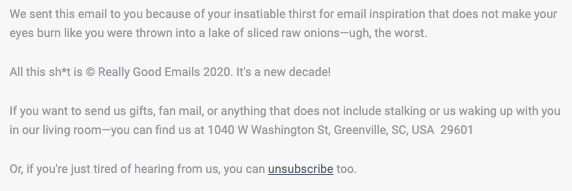
The footer then goes on to offer a creative take on their copyright, address, and unsubscribe link. It’s perfection.
Show the Team Behind the Message
Another way to connect subscribers to your company and inject personality is to show the team behind the work. If you’re subscribed to Litmus’ weekly digest emails, you may have noticed the footer below. (If you aren’t subscribed, please join us!)
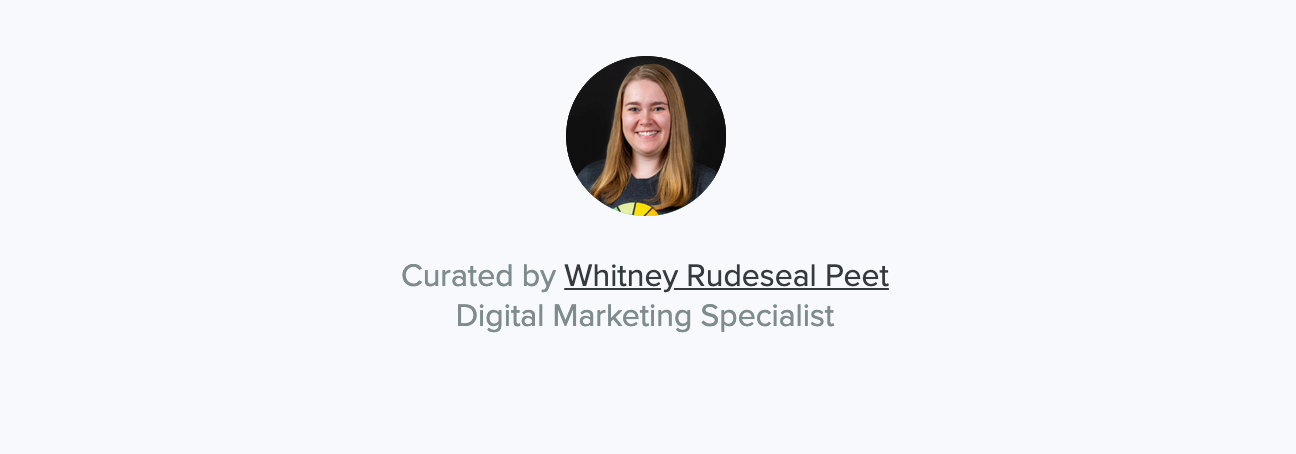
As you can see in our Litmus example, showing the team behind a message doesn’t have to be complicated. A face, name, and title go far in reminding subscribers that there are real humans on the other end of the email.
If you want to showcase your team and story fully, look to A Kids Book About for inspiration. The children’s book company uses the welcome email to introduce more than just their products.

The email starts with an excerpt about the origin of the company. It explains who created the first book, why he did it, and how the company has grown. The welcome email also expands on the company’s mission, and finally, their team. Including pictures of the founders as kids is another fun touch. The welcome email is the perfect spot to give a behind-the-scenes look at your company.
Show Customer Appreciation
In addition to showing love for your team and history, you can use email to send appreciation to customers. While you may have the occasional “appreciation” campaign or promotion, there are small ways to incorporate your gratitude more often.

For example, Dreamhost includes a “customer since” banner in their emails, shown above. This is a simple way to customize an email while reminding users of their journey with your company. If you choose to highlight a metric in each email, make sure that it has the same effect for your less engaged users. For example, seeing a zero in terms of sales made or tasks completed isn’t motivating, but using a date remains neutral.
Provide Your Company’s Perspective
A company with a strong stance is one that stands out. If your team has a perspective or an opinion that strays from the industry norm, you should use it to your advantage. While actions speak louder than words, and you shouldn’t claim to have an opinion you don’t, keeping your perspective top of mind helps customers identify with you.
Lush, for example, has a unique approach to personal products. While their stance is solidified by the fact that they walk the walk, it doesn’t hurt to remind subscribers of your views.

At the bottom of the promotional email above, Lush includes their position on business. The banner consists of statements such as “fighting animal testing,” “ethical buying,” and “naked! packaging.” Including your company’s outlook at the bottom of every email is helpful for both existing customers as well as potential customers who may be learning of your brand thanks to a forwarded email.
Another company that keeps its value prop front and center is Papier. The bottom of their email features a footer that explains “why pick Papier.”

There are three reasons: designer collaborations, quality, and personalization. For past customers, these points act as a reminder of what else there is to explore with the company. For potential customers, the perspective differentiates the brand from other options.
Use Relatable Headlines
This final category may not technically count as a “small” email element. After all, the headline is quite literally front and center. However, it’s still a spot where you can really stand out. Our first example is from Rudy’s, and it’s an abandoned cart message.
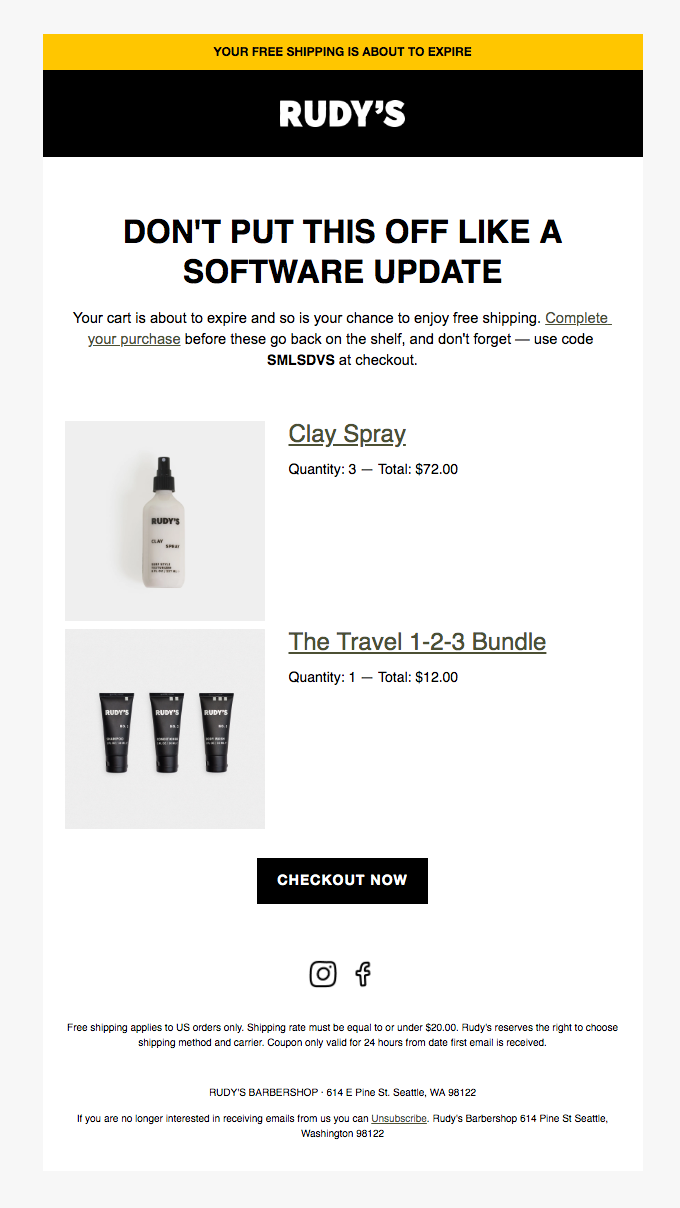
I’ve read many emails, but no header has ever been so relatable. Rudy’s says about finishing your checkout:
“Don’t put this off like a software update.”
In a single line, the company has shown me their personality, and it feels more like a friend than a company. The phrase instantly hits home and is memorable, which probably works to Rudy’s advantage.
Another company that uses fun headlines to their advantage is Chime. The email below is aimed at getting a person to try the service, and it starts off with the headline:
“That Feeling When Payday Comes Early”
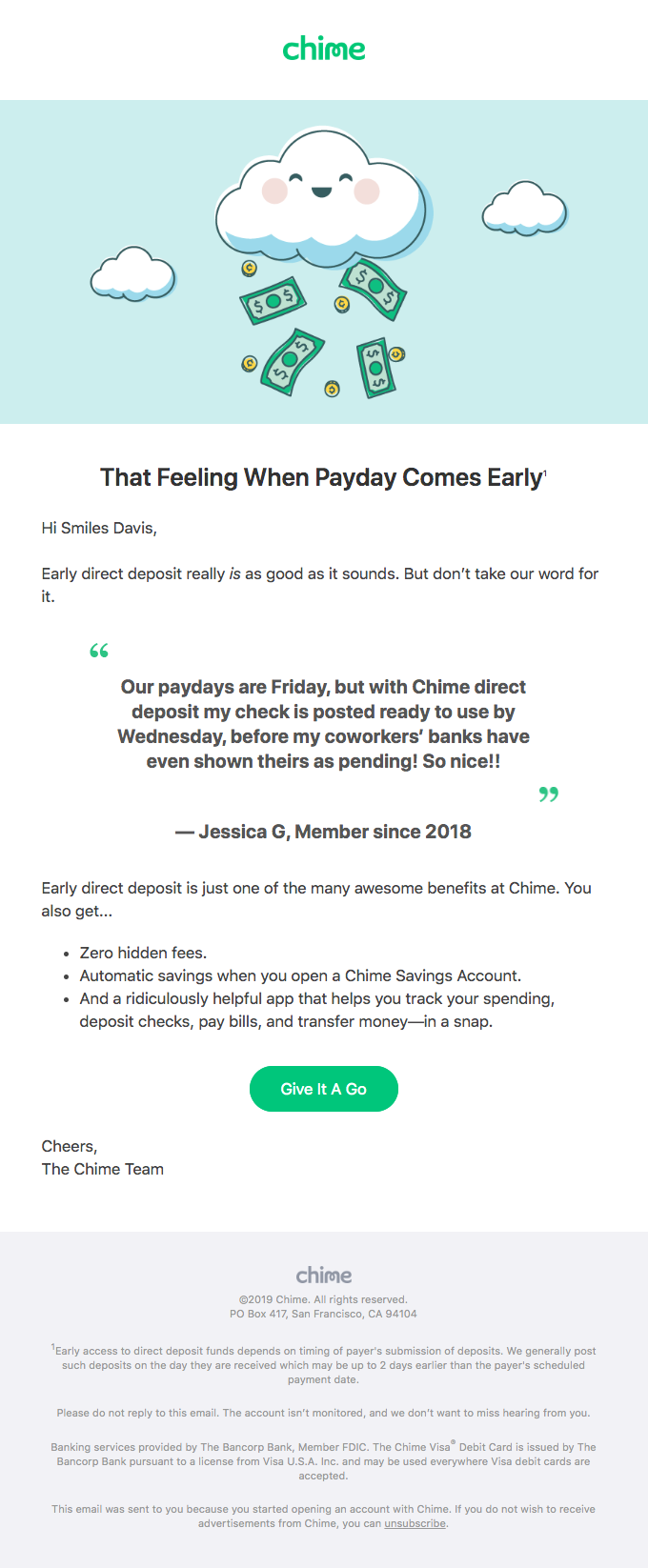
Chime sets the tone for the message before someone even opens the email with the subject line “It’s kinda like the first day of summer vacation.” Rather than use a practical angle for presenting their early direct deposit service, they lean into feel-good scenarios we can all relate to. The lighthearted feel is also echoed in the illustration of a smiling cloud sending down money instead of rain.
Share Animations
If a picture is worth a thousand words, then surely a GIF is worth more. Using animations in email can give context to your message, and they’re just downright fun. Take, for example, Lyft’s scooter announcement email. A simple illustration would have sufficed, but adding a scooter doing tricks and spins makes the email way more fun.
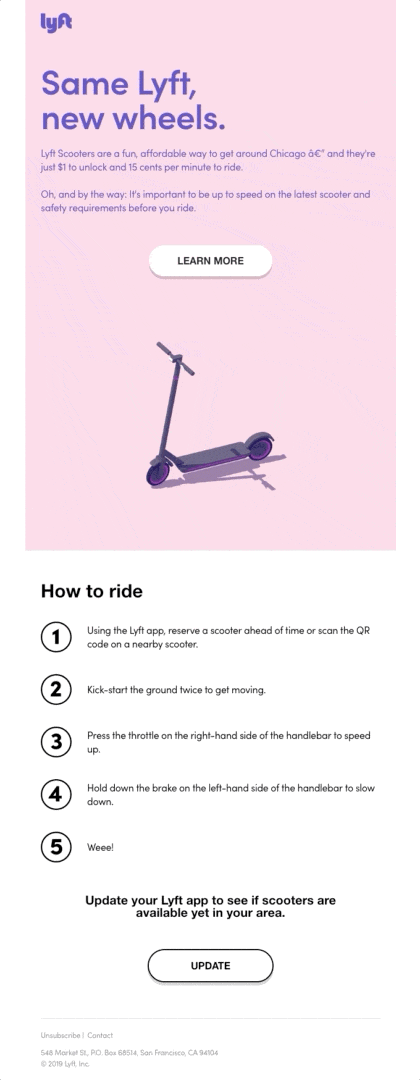
Animations are perfect for building anticipation or curiosity. MOO does this perfectly in the example below. What could have been a standard product or promotion email is transformed into a Rube Goldberg machine with a simple GIF. Anyone who says they could resist wanting to cut the string is probably lying.
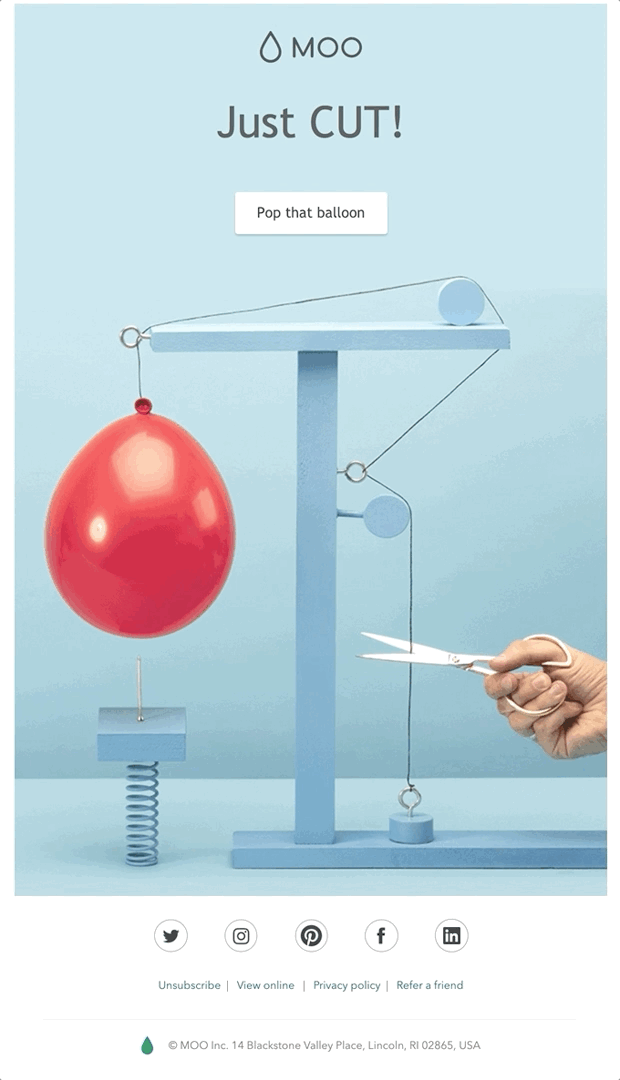
GIFs in emails are an extra special touch, as long as they’re used sparingly. Animations have the element of surprise that helps important emails stand out from the rest of your campaigns. Getting creative with animations is the perfect way to let brand personality shine through, and thinking outside of the box is a GIF superpower.
Bonus: Surprise with ALT Text
What would a post about surprising little email details be without a bonus at the end? Litmus used an email easter egg hunt to promote conference tickets, including tactics such as surprise ALT text.
A series of emails contained secret “golden tickets” to Litmus Live. The first to find the easter egg and tweet it out wins. With images turned on, a graphic in the first email looked like a simple design element.

However, when images were turned off, the alt text revealed a golden ticket.

While you probably won’t include something like a golden ticket in every email that goes out, you can still have fun with ALT text. The text should be descriptive, but descriptive doesn’t equal boring. In addition to adding brand personality, giving ALT text a little more attention creates a better experience for readers with images turned off.
Standing out amongst competitors, or everything going on in your customers’ lives, is tough. While you need to get the major components of your email program, such as workflow and testing, right first, you can add small details to make email fun.
Do you have any great examples of emails that made you smile? We’d love to see them.
And if you’d like to see more great email designs, you can check out the 10 Email Trends Hitting Your Inbox in 2020.

Steph Knapp
Steph Knapp is a Freelance Content Writer for SaaS and B2B companies
